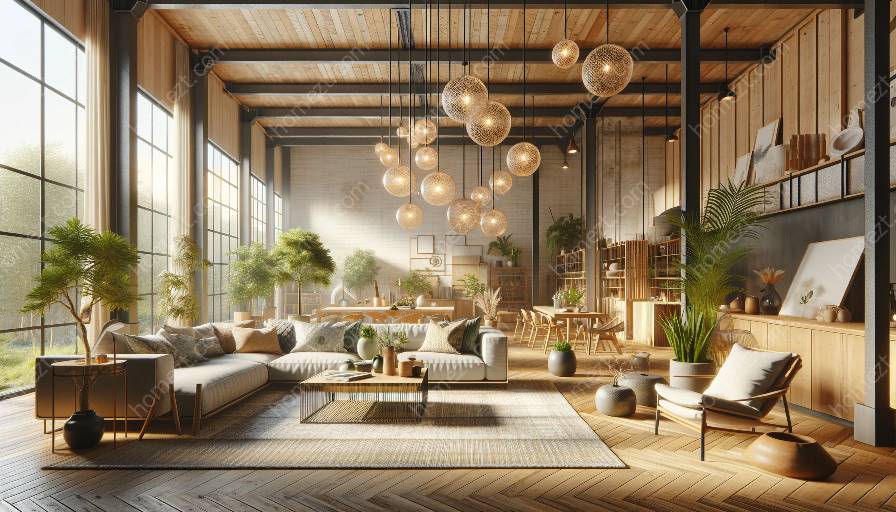As sustainability becomes an integral part of design, its economic advantages are increasingly recognized. Sustainable interior design offers financial benefits and cost savings while supporting eco-friendly practices in the field of interior design and styling.
Here, we delve into the compelling reasons why sustainable interior design is not only environmentally responsible but also economically advantageous.
The Rise of Sustainability in Interior Design
In recent years, there has been a significant shift towards sustainable and eco-friendly design practices within the interior design industry. The emphasis on sustainability encompasses a broad range of considerations, including materials, energy efficiency, and waste reduction.
This growing trend is influenced by both environmental concerns and the desire for cost-effective design solutions. Through sustainable interior design, designers and homeowners can create aesthetically pleasing spaces while minimizing environmental impact and maximizing long-term financial benefits.
Cost Savings Through Energy Efficiency
One of the key economic advantages of sustainable interior design is the potential for significant cost savings through energy-efficient practices. By integrating energy-saving technologies, such as LED lighting, energy-efficient appliances, and smart home systems, sustainable interiors can reduce energy consumption and lower utility bills.
Furthermore, sustainable interior design often involves effective insulation and passive heating and cooling strategies, which can result in reduced reliance on artificial heating and cooling systems. This not only reduces operational costs but also contributes to a smaller carbon footprint.
Longevity and Durability of Materials
Another economic benefit of sustainable interior design lies in the longevity and durability of materials used. Sustainable design favors materials that are not only environmentally friendly but also robust and long-lasting. This can result in reduced maintenance and replacement costs over the lifespan of the interior design elements.
For instance, sustainable interior designers may opt for reclaimed wood, recycled metal, or natural stone, which not only contribute to a unique aesthetic but also offer durability that can withstand the test of time. This approach to material selection can lead to long-term cost savings for homeowners and businesses alike.
Waste Reduction and Cost Efficiency
Sustainable interior design promotes a circular economy by minimizing waste and optimizing resource use. By utilizing recycled and upcycled materials, as well as employing efficient waste management practices, sustainable interior design can reduce material costs and contribute to a more cost-efficient design process.
Moreover, designing with the principles of sustainability in mind often leads to streamlined processes and reduced construction waste. This not only benefits the environment but also translates into potential cost savings for clients, making sustainable interior design an economically viable choice.
Enhanced Property Value and Marketability
Investing in sustainable interior design can enhance the overall value and marketability of a property. In today's real estate market, there is a growing demand for eco-friendly and sustainable homes and commercial spaces. Properties with sustainable interior features are often perceived as more desirable and can command higher resale values.
By integrating sustainable design elements, such as energy-efficient appliances, sustainable building materials, and green technologies, property owners can differentiate their spaces in the market and attract environmentally conscious buyers, leading to potential financial gains in the long run.
Cost-Benefit Analysis of Sustainable Interior Design
When considering the economic advantages of sustainable interior design, it is essential to conduct a comprehensive cost-benefit analysis. While initial investment costs may appear higher due to the use of eco-friendly materials and technologies, the long-term financial benefits and cost savings can outweigh the upfront expenditure.
Additionally, government incentives, tax credits, and rebates for sustainable design practices can further enhance the economic feasibility of sustainable interior design projects, making them an attractive option for both residential and commercial clients.
Conclusion
Ultimately, sustainable interior design offers significant economic advantages that align with the principles of sustainable and eco-friendly design while elevating the practice of interior design and styling. From cost savings through energy efficiency and durable materials to enhanced property value and marketability, the financial benefits of sustainable interior design make it a compelling choice for designers, homeowners, and businesses alike.


























